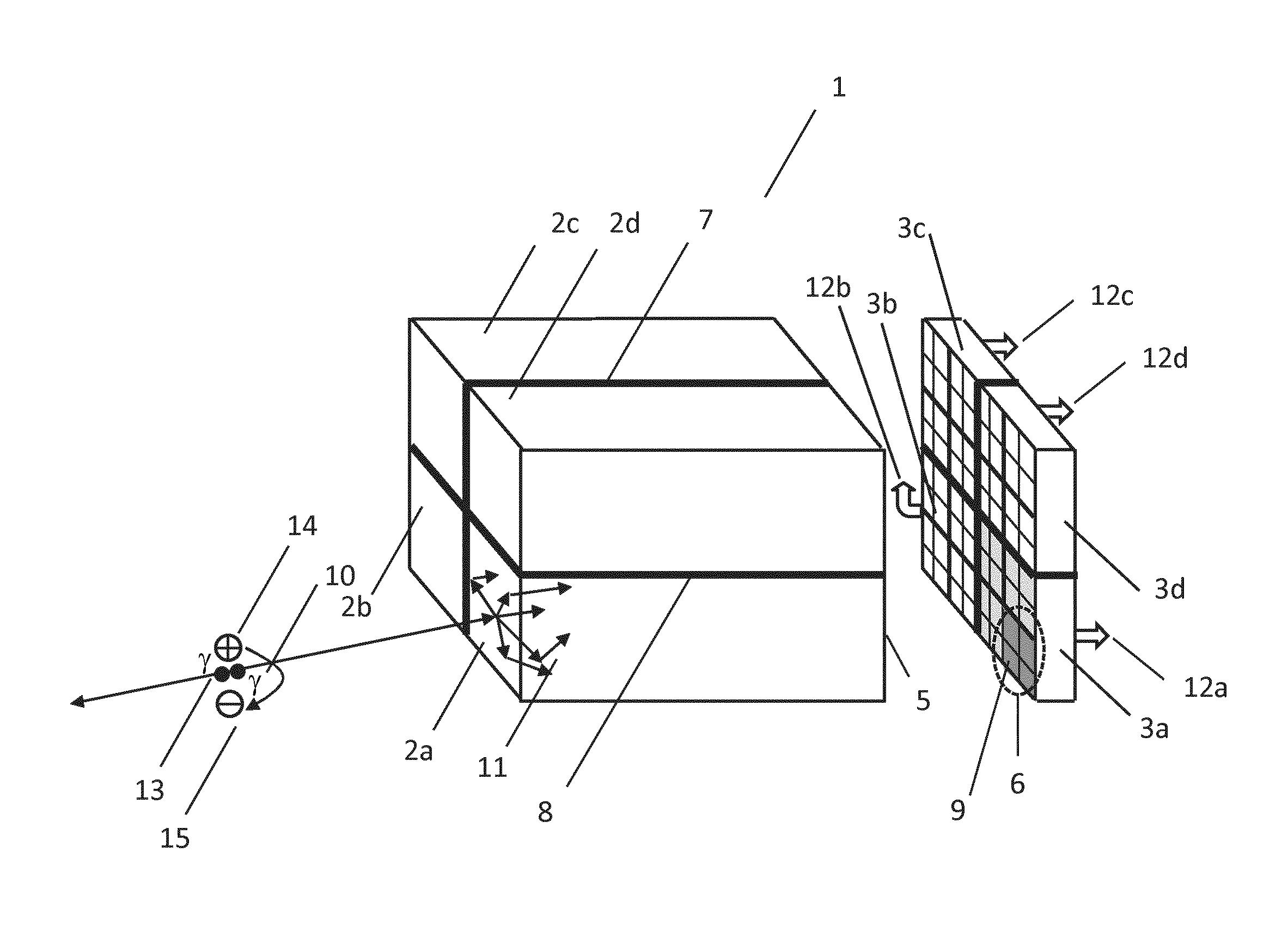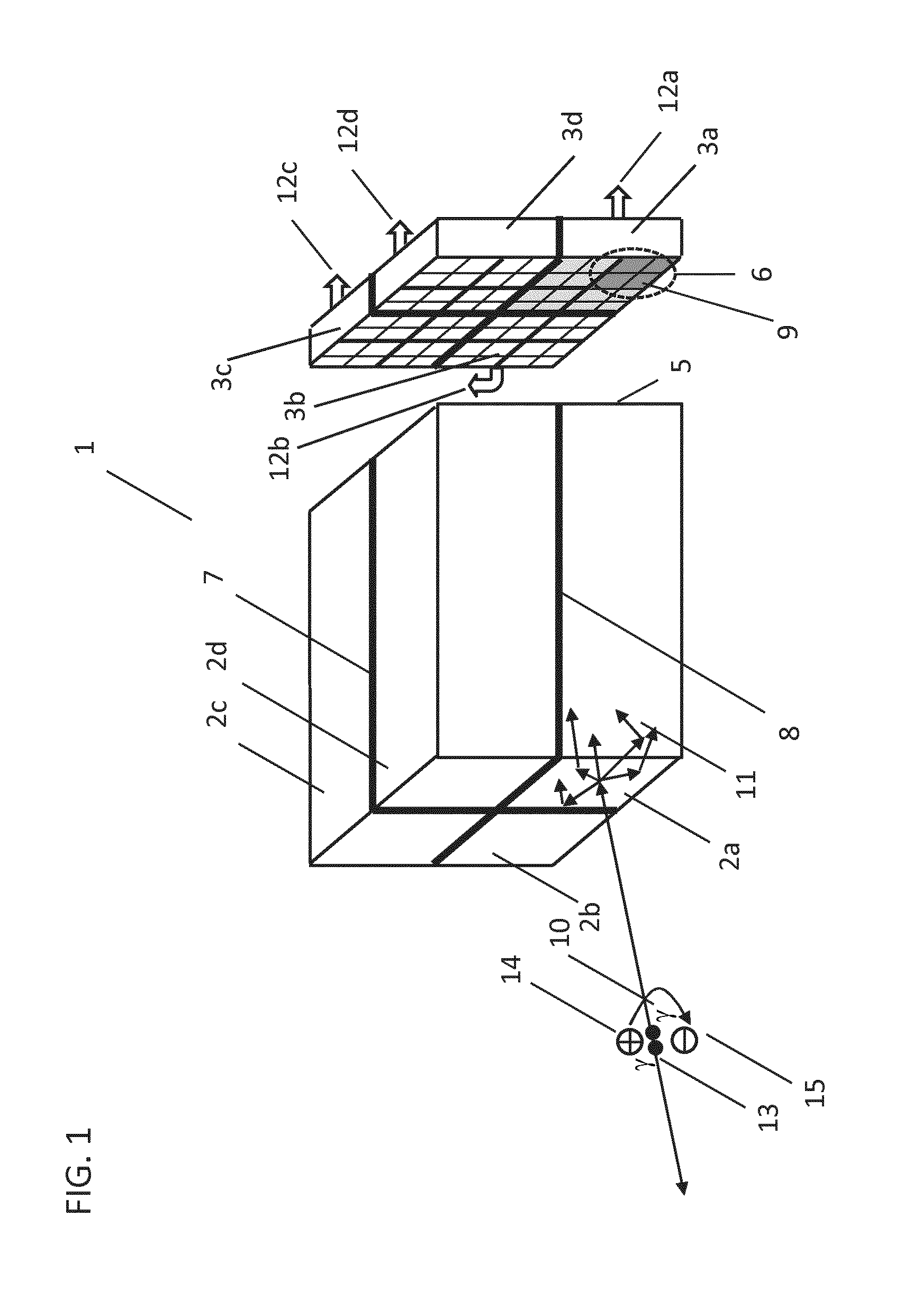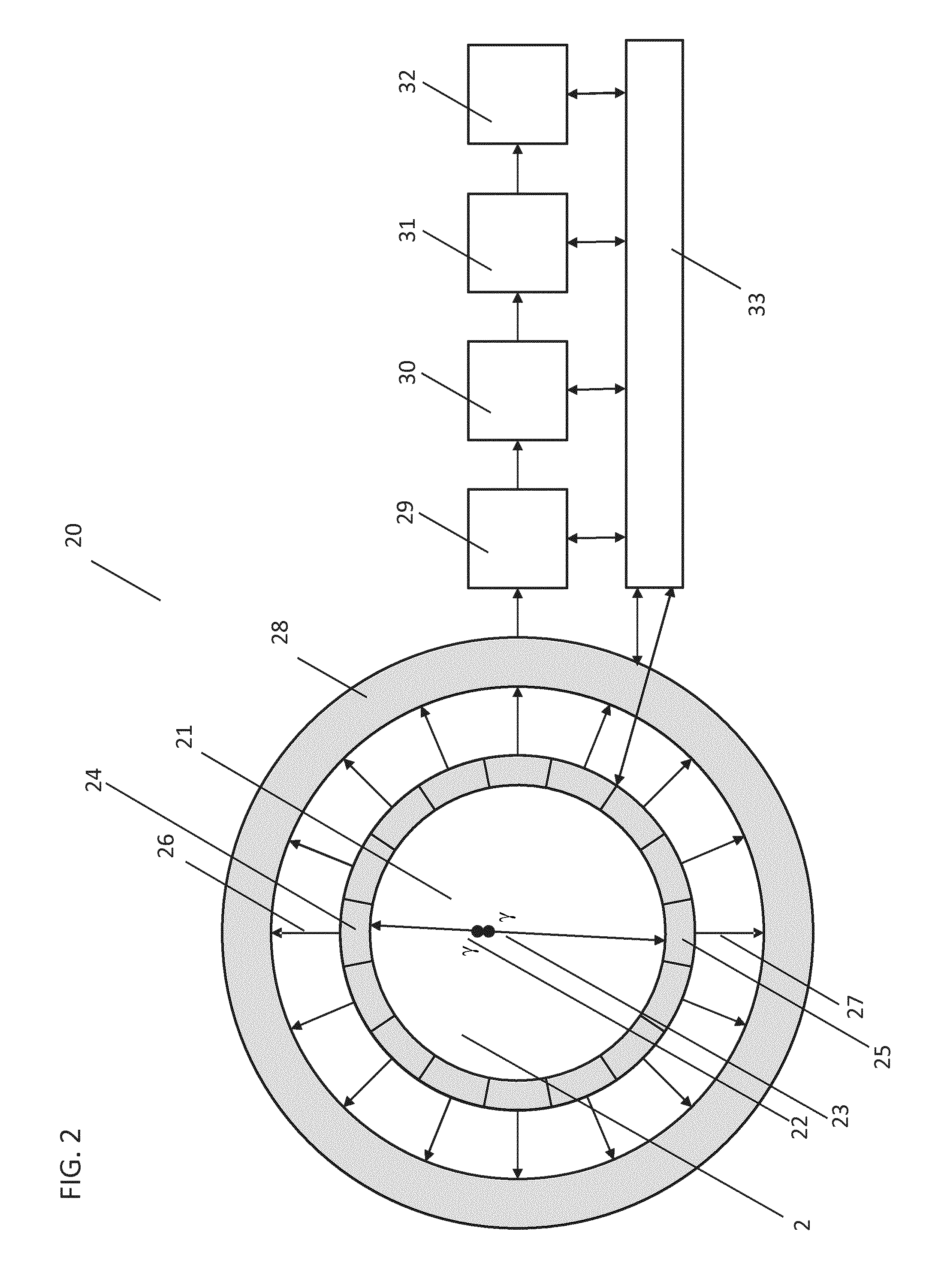Timestamping detected radiation quanta
a detection and quanta technology, applied in radiation measurement, instruments, measurement devices, etc., can solve the problems of unit generation of timestamps, false triggering of timing units, and loss of detection accuracy, so as to improve discrimination and repeatable timing performance
- Summary
- Abstract
- Description
- Claims
- Application Information
AI Technical Summary
Benefits of technology
Problems solved by technology
Method used
Image
Examples
first embodiment
[0047]FIG. 4 illustrates a timing unit and timestamp trigger unit 71 in accordance with certain aspects of the invention. In FIG. 4, scintillator element 40 is in optical communication with optical detector pixel array 41 to form a gamma photon detector. Scintillation light generated within scintillator element 40 is detected by optical detector pixel array 41. A plurality of such gamma photon detectors may be used in the PET imaging system 20 illustrated in FIG. 2. Optical photons from for example Cherenkov radiation may be directly detected in the same way although in the absence of scintillator element 40. Optical detector pixel array 41 comprises one or more optical detector pixels, each comprising one or more pixel cells. A pixel cell may be a single optical photon avalanche detector (SPAD), otherwise known as a silicon photomultiplier (SiPM), and may be operated in the Geiger mode in which the reception of an optical photon results in the breakdown of the junction and a logica...
second embodiment
[0058]The embodiment in FIG. 5 may be configured to take advantage of the observation that a scintillation light pulse generated in a scintillator element 40 following the reception of a gamma photon is typically characterized by a rapid initial optical photon detection rate followed by a reduction in the optical photon detection rate. Such a profile is typical of a scintillation light pulse from a gamma photon in a PET imaging system in which a rapid initial increase in scintillation light is followed by an exponential decay. The decay constant may be in the order of 40 ns. By contrast the profile from dark count noise, which is randomly generated, results in a more uniform pixel cell triggering rate. Optical photons from for example Cherenkov radiation may be directly detected in the same way as described above although in the absence of scintillator element 40. These characteristic differences in the pixel cell triggering rate may be exploited in the second embodiment illustrated...
fourth embodiment
[0064]In an example implementation of the fourth embodiment, the circuit in FIG. 5 is configured such that the monostables in pulse shortener unit 51 each have a period of 0.5 ns, delay unit 56 has a delay period of 1 ns and delay unit 61 has a delay period of 10 ns. Furthermore output 57 of primary trigger logic 54 is configured to be in a logical true state when any one of its inputs from pulse shortener unit 51 are in a logical true state. Output 70 of secondary trigger logic unit 55 is configured to be in a logical true state when the number of pixel cells triggered in optical detector pixel array 41 during the 1 ns period of delay unit 56 corresponds to a gamma photon reception rate exceeding 106 counts per second. Output 69 of tertiary trigger logic unit 63 is configured to be in a logical true state when the number of triggered cells in optical detector pixel array 41 during the 10 ns period of delay unit 61 corresponds to a gamma photon reception rate exceeding 105 counts pe...
PUM
 Login to View More
Login to View More Abstract
Description
Claims
Application Information
 Login to View More
Login to View More - R&D
- Intellectual Property
- Life Sciences
- Materials
- Tech Scout
- Unparalleled Data Quality
- Higher Quality Content
- 60% Fewer Hallucinations
Browse by: Latest US Patents, China's latest patents, Technical Efficacy Thesaurus, Application Domain, Technology Topic, Popular Technical Reports.
© 2025 PatSnap. All rights reserved.Legal|Privacy policy|Modern Slavery Act Transparency Statement|Sitemap|About US| Contact US: help@patsnap.com



